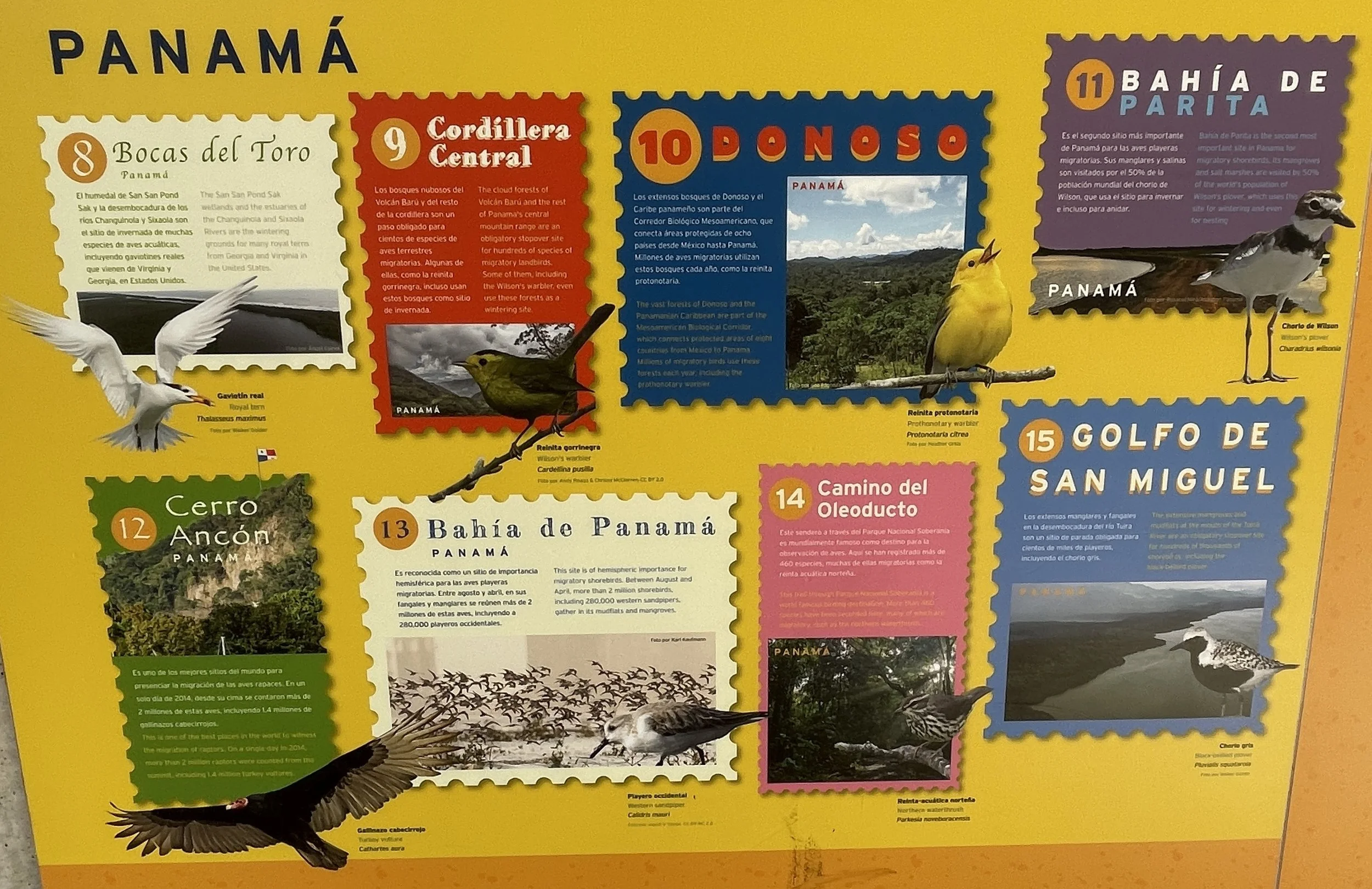Maps are an underutilized mechanism to help visitors grasp the bigger picture. They have many uses beyond site orientation , although often when I visit and analyze sites, even orientation maps are either not available or not prominently displayed for easy access. That should be a given in virtually all situations.
Maps can provide new perspectives for people and show connections to other parts of your district, state, country, and continent that you were not aware of. These can be illustrative of both modern day and in the past. They can be useful to present a natural process and a cultural process -one of each I will discuss in this post.
One possible outcome could be the understanding that local land changes can have impacts way beyond initial restricted boundaries, once an understanding of a bigger regional or global perspective begins to take affect, when one is exposed to how the natural world works. The natural process example to be given could easily have emphasized this.
Back in August, I talked about my visit to the wonderful Panamanian Museo de la Biodiversidad in the post “I Scratch Your back…” and today’s post is an expose of more things they excelled at, like the use of maps.
People find bird migration fascinating and a greater understanding of different type of birds’ actual trips and their relationship to the country where resident visitors live, warrants being highlighted as a way to forge better connections between humans and their feathered fellow earth passengers.
Courtesy Bill Reynolds
This is just one example of many outdoor murals depicting different species of birds - not only graphically showing the bird’s journey from beginning to end but also colour -coding the nesting, migration, and wintering components. This opens up more questions and there is a QR code for further exploration if one wants to dig deeper.
For those unclear of the size of this bird the descriptor says it can fit in the palm of your hand (the length in cm is not necessary nor as effective). In addition, the text says the bird weighs the same as a AAA battery rather than a scientific supplying of the weight in grams- this is an effective use of the interpretive analogy !
Adjoining this series of panels are another complementary set dealing with same species using an alluring vibrant postage stamp graphic explaining about different locations within Panama where these different birds can be found- the numbers in the top left corner of each stamp correspond to a location on a map so visitors can find them. Our little bright yellow fellow referenced earlier is linked to location number 10.
Courtesy Bill Reynolds
Each of the captions on the stamps describe the different habitats their country provides for the different needs of these migrants- from Caribbean coastal forests to mountainous cloud forests and from estuaries to mudflats & mangroves, visitors get a sense of their country’s biodiversity that exists, and is necessary for bird survival.
This colourful tapestry stirred up a revenue generating thought of collectible cards that could be produced, giving a platform to the biodiversity of birds, encouraging youngsters to discover the wide world of avian life. My grandchild is fascinated with pokemon cards, however I contend that the life exploits of migrating birds can certainly hold their own, when presented in an enticing way. On December 6 we did a blogpost titled A Game and A Collectible -check it out especially the last section called The Lure of the Collectible for an example being used as a monthly draw.
As an example, Wingspan is a fun well designed boardgame for all ages that is not restricted to birdwatchers or players who have any knowledge of birds species (Note: I receive no financial compensation for plugging this). It is not trivia-based or based on fact recall. It captures the competitive gaming allure while exposing players to bird ecology. There is both a European and North American version. I digress.
Another map which was incredibly thought-provoking dealt with a universal cultural process that can be described as: People develop skills to trade for things they desire and create systems for exchanging those goods.
Courtesy Bill Reynolds
This was a very effective way to introduce the diversity of transport routes in the past both short range and mid range Meso-American trade. It puts our long range trade into perspective. Showing exchange centres, and separating items into raw materials and finished goods then creating a list with icons easily seen on the map was a detail worth highlighting. The universal desire not just for agricultural goods and metals but for ornamentation materials was enlightening. Manatee bones and monk seal teeth were a prize back then -every generation and culture has that decorative urge. The following text panel extends the concept of personal decoration using items from nature to artifact production having natural inspiration.
Will the exposure to artifacts from the past affect our relationship to nature in the future? We appreciate feedback so drop us a line.




